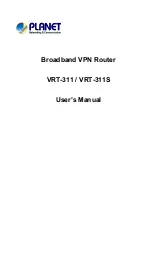
266
esp:0xbfe244b8 ebp:0xbfe244c8 esi:0xffffffff edi:0xbfe24674
eip:0xb7caba4a eflag:0x00000292 cs:0x00000073 ss:0x0000007b
ds:0x0000007b es:0x0000007b fs:0x00000000 gs:0x00000033
...
Table 60 Command output
Filed Description
Crashed PID
ID of the crashed process.
Crash signal
Signals that lead to the crash:
•
SIGUNKNOW
—Unknown reason.
•
SIGABRT
—Abort.
•
SIGBUS
—Bus error.
•
SIGFPE
—Erroneous arithmetic operation.
•
SIGILL
—Illegal hardware instructions.
•
SIGQUIT
—Quit signal sent by the controlling
terminal.
•
SIGSEGV
—Invalid memory access.
•
SIGSYS
—Invalid system call.
•
SIGTRAP
—Trace exception breakpoints.
•
SIGXCPU
—CPU usage limit exceeded.
•
SIGXFSZ
—File size limit exceeded.
Crash time
Time when the core file was generated.
Core file path
Directory where the core file is saved.
Backtrace stopped
All stack information has been displayed.
Related commands
reset exception context
display exception filepath
Use
display exception filepath
to display the core file directory.
Syntax
display exception filepath
[
slot
slot-number
[
cpu
cpu-number
] ]
Views
Any view
Predefined user roles
network-admin
Parameters
slot
slot-number
: Specifies an IRF member device by its ID. If you do not specify this option, the IRF
master device is specified.
cpu
cpu-number
: Specifies a CPU by its number.
Examples
# Display the core file directory.
<Sysname> display exception filepath
The exception filepath on slot 1 is flash:.
















































